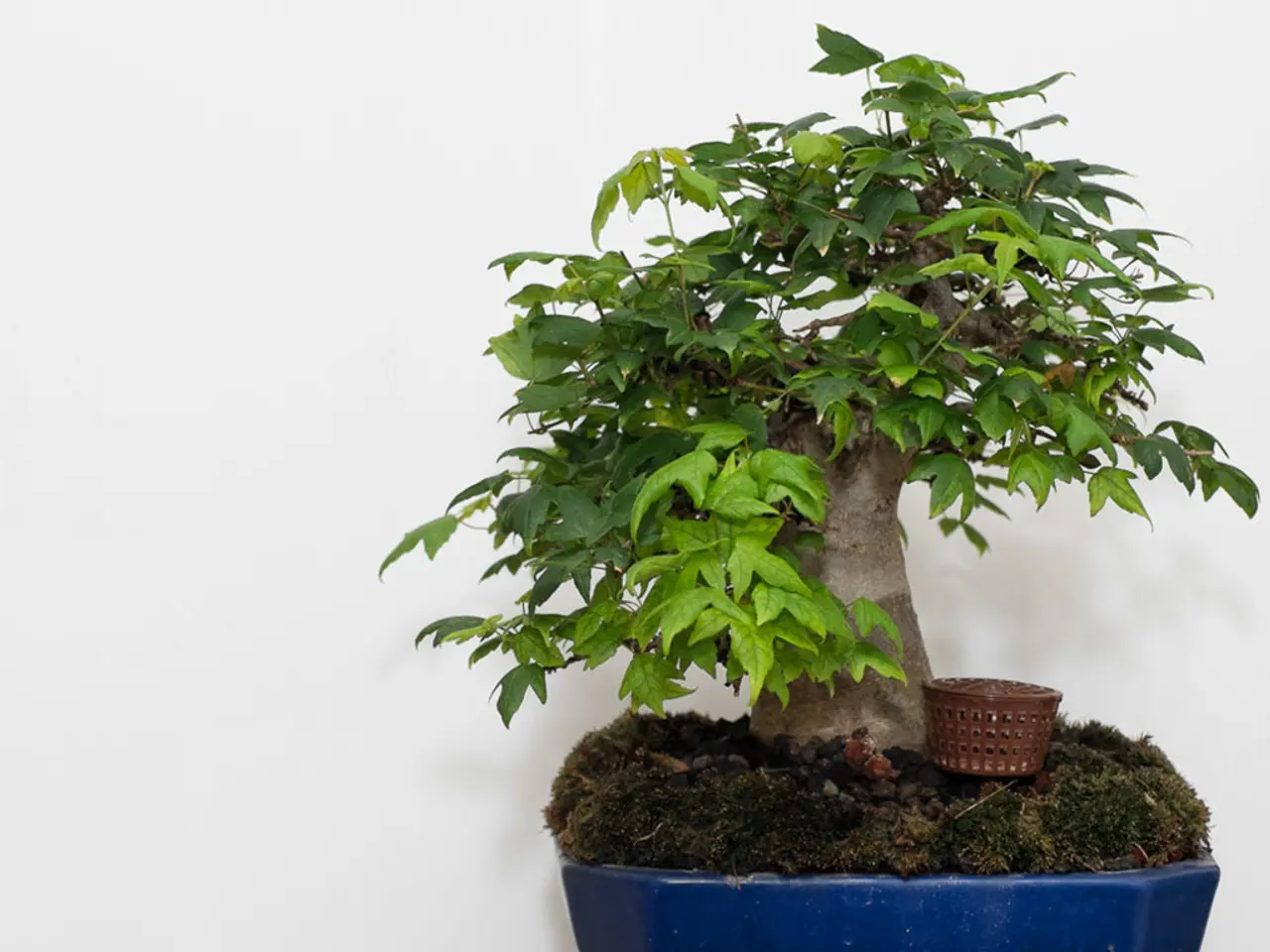Achieving Balance in Bonsai Art: Blending Texture and Visual Symmetry for Harmonious Appearance
In the captivating world of bonsai, achieving natural proportion and visual harmony is a delicate art that combines the intricacies of nature with the precision of artistry. Here's a guide to some key techniques that help balance aesthetics with the tree's natural growth.
## Techniques for Achieving Natural Proportion and Visual Harmony
### 1. Pruning and Shaping Pruning plays a vital role in shaping the bonsai, promoting good airflow and preventing disease. Structural pruning removes dead, weak, or crossing branches, while maintenance pruning keeps the bonsai's style and silhouette tidy.
### 2. Wiring Wiring involves using aluminum or copper wire to gently bend and position branches into the desired shape. Leave the wire on for a few weeks until the branch holds its shape.
### 3. Proportion Control Ensure that the tree's height, width, and depth are in harmony. The Rule of 3 in bonsai design can help balance these elements by arranging features in groups of three to create a visually appealing composition.
### 4. Nutrient and Water Management Calibrate the feeding schedule to allow the trunk to thicken while keeping leaf size small, maintaining a refined appearance. Adaptive watering involves checking soil moisture regularly and ensuring water quality is suitable for your bonsai.
### 5. Repotting Regular repotting ensures the roots have room to grow and stay healthy, supporting proportionate growth and maintaining the tree's vigor.
### 6. Observation and Adaptation Bonsai care is an ongoing process that requires observation and adaptation. Each watering and feeding session is an opportunity to connect with the tree and adjust care strategies as needed.
By incorporating these techniques into your bonsai design, you can create a visually stunning miniature tree that resonates with serenity and calm.
## Balancing Textures and Visual Harmony Contrasting textures, such as smooth bark against rough rocks or delicate foliage against weathered deadwood, can add depth and visual interest to your Bonsai. When done correctly, these contrasting elements can create a visually striking miniature landscape that invites contemplation and appreciation.
In conclusion, achieving natural proportion and visual harmony in bonsai design is a delicate balance between aesthetics and nature. By understanding scale, proportion, and texture, and by incorporating techniques such as pruning, wiring, proportion control, nutrient and water management, repotting, observation, and adaptation, you can create a visually stunning miniature tree that resonates with serenity and calm.
gardens, home-and-garden - Cultivating a bonsai garden can bring the art of bonsai design indoors, allowing you to maintain and nurture miniature trees within your living space, blending lifestyle with a touch of nature.
gardening - Applying the principles of bonsai design from skilled gardening can extend beyond the confines of pots and trays, transforming your outdoor home-and-garden into a serene and harmonious miniature landscape that invites contemplation and appreciation.




